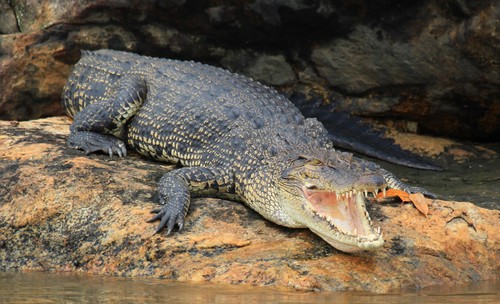
Saltwater Crocodile
The saltwater crocodile, Crocodylus porosus, is a formidable apex predator of Southeast Asian and Australian waters. With its immense size and strength, this crocodile commands respect in both brackish and freshwater habitats, crucially balancing local ecosystems through its predatory role.
Dark, Brown, Grey, Dull, Olive, Black-Brown
Color
High
Aggression
Least Concern
Conservation Status
Stable
Population Trend
Characteristics
Crocodylus porosus, commonly known as the saltwater crocodile, is the largest living reptile. It inhabits brackish and freshwater regions across Southeast Asia and northern Australia. Known for their powerful jaws and territorial behavior, these apex predators play a crucial role in maintaining healthy ecosystems.
Distribution Range of the Saltwater Crocodile
Crocodylus porosus, commonly known as the saltwater crocodile, is native to Southeast Asia, Northern Australia, and the eastern coast of India. Its geographical distribution spans across countries such as India, Bangladesh, Myanmar, Thailand, Vietnam, Malaysia, Indonesia, Papua New Guinea, the Philippines, and the northern regions of Australia.
Saltwater Crocodile's Habitat
Environmental Conditions
Saltwater crocodiles inhabit a range of environments, primarily found in coastal brackish mangrove swamps, estuaries, deltas, and lagoons. They can also be found in the lower stretches of rivers and sometimes venture into the open ocean. The climate in these regions is typically tropical, with high temperatures and humidity, and seasonal monsoons.
Ecological Niche
As apex predators, saltwater crocodiles play a crucial role in their ecosystem. They are highly adaptable and can thrive in a variety of aquatic habitats. They feed on a wide range of prey, including fish, birds, and mammals, and are known for their ability to travel long distances in search of food or suitable habitat. Their presence helps regulate the populations of other species and maintain the ecological balance within their habitat.
Copyright @ Nature Style Limited. All Rights Reserved.
 English
English